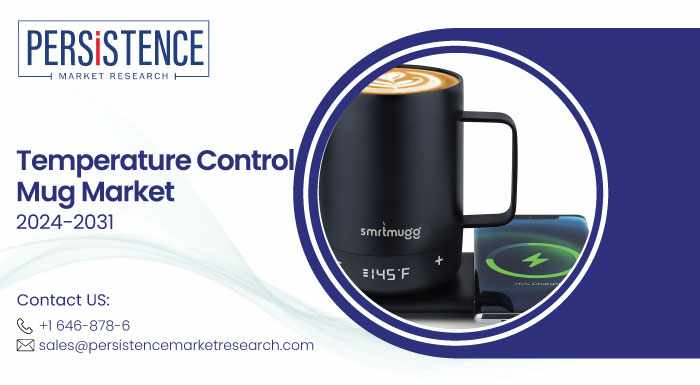
The residential robotic vacuum cleaner market is witnessing remarkable growth, fueled by rapid technological advancements and the increasing adoption of automation in homes worldwide. As consumers seek more efficient and hands-free cleaning solutions, robotic vacuums are stepping up as the go-to choice for modern households. By combining innovation, artificial intelligence (AI), and automation, these smart devices are transforming home cleaning routines, making them faster, more efficient, and hassle-free. In this blog post, we’ll explore how innovation and automation are shaping the future of the residential robotic vacuum cleaner market.
1. Technological Innovations Driving the Market
The residential robotic vacuum cleaner market has come a long way from its early models. Today’s robotic vacuums come packed with innovative technologies that significantly enhance their performance, user experience, and overall value. These technological advancements are essential for meeting the growing consumer demand for intelligent, high-performance cleaning solutions.
Key Technological Innovations:
AI-Powered Navigation: One of the standout features of modern robotic vacuums is AI-based navigation. Using advanced algorithms and sensors, robotic vacuums can efficiently map your home’s layout, identify obstacles, and optimize their cleaning path. This leads to faster and more thorough cleaning sessions, without the need for human intervention.
Smart Sensors: Many robotic vacuums are now equipped with sophisticated sensors that can detect dirt levels, identify areas that need more attention, and avoid obstacles like furniture and stairs. These sensors help vacuums clean more efficiently and prevent damage to the device or household items.
Enhanced Suction Power: With improvements in motor technology, robotic vacuums now offer powerful suction capabilities that rival traditional vacuum cleaners. This allows them to clean not only hard floors but also carpets and other soft surfaces with ease, making them suitable for a wider range of environments.
2. Automation: The Key to Hands-Free Cleaning
The growing trend toward automation in everyday life is one of the most significant drivers of the robotic vacuum cleaner market. Automation allows consumers to streamline their home cleaning processes and maintain a cleaner environment without the time and effort typically required by traditional vacuums.
Key Automation Features:
Scheduled Cleaning: Robotic vacuums can be programmed to clean at specific times, whether you’re at work, asleep, or simply occupied with other tasks. This feature ensures that cleaning is done regularly, without any action required on the user’s part.
Autonomous Charging: As robotic vacuums finish their cleaning tasks or when their battery runs low, they can automatically return to their docking station for recharging. This autonomy reduces the need for user intervention and ensures the device is always ready for the next cleaning session.
Real-Time Monitoring and Control: Many modern robotic vacuums are equipped with smartphone apps that allow users to remotely monitor the cleaning process, change settings, or even start or pause the vacuum from anywhere. These apps provide real-time updates on cleaning progress and allow users to customize their vacuum's behavior to suit their needs.
3. Integration with Smart Home Ecosystems
As homes become smarter, robotic vacuums are increasingly integrated into broader smart home ecosystems. The ability to control and monitor these vacuums through voice commands and apps enhances their convenience and makes them an essential part of modern households.
Smart Home Integration Features:
Voice Control: Integration with voice assistants like Amazon Alexa, Google Assistant, or Apple Siri allows users to control robotic vacuums with simple voice commands. Users can tell their vacuum to start cleaning, pause, or stop cleaning with just a spoken instruction, making it even more convenient to operate.
Smart Home Automation: Robotic vacuums can now work in tandem with other smart home devices. For example, users can create routines where the vacuum starts cleaning when they leave the house or pause when they enter. This seamless interaction between devices makes home management simpler and more efficient.
Smart Mapping and Customization: Using connected apps, homeowners can define cleaning zones, restrict certain areas, and even set specific cleaning preferences based on the layout of their home. These customizations make robotic vacuums more adaptable to unique home environments.
4. Improved Efficiency and Performance
Robotic vacuums are becoming more efficient not only in their cleaning power but also in how they manage energy and time. Innovations in battery life and cleaning algorithms have greatly enhanced the performance of these devices.
Key Efficiency Enhancements:
Longer Battery Life: Modern robotic vacuums are equipped with longer-lasting batteries that allow them to clean larger areas on a single charge. This makes them more practical for homes with multiple rooms or larger floor plans, eliminating the need for frequent recharges.
Faster Cleaning Cycles: Improved algorithms and sensors allow robotic vacuums to clean homes in less time while achieving the same or better cleaning results. This reduction in cleaning time makes robotic vacuums more efficient and ensures they can maintain a regular cleaning schedule with minimal effort.
Smarter Power Management: Some robotic vacuums automatically adjust their power based on the floor type they are cleaning. For example, when moving from a hard surface to a carpet, the vacuum will increase its suction power to ensure a deeper clean.
5. Affordability and Accessibility for Consumers
As automation technology becomes more widespread, the affordability of robotic vacuum cleaners has improved. While high-end models with advanced features remain available, the entry-level segment is also growing, offering budget-friendly options for consumers. This broad range of price points makes robotic vacuums more accessible to a wider audience.
Price Segmentation and Affordability:
Budget-Friendly Options: For consumers seeking basic cleaning solutions, entry-level robotic vacuums are now available with essential features like basic navigation, simple scheduling, and reliable cleaning performance at a lower cost.
Premium Features at Competitive Prices: The market is also seeing the integration of premium features, such as AI-based navigation, powerful suction, and smart home integration, into more affordable models. This allows consumers to enjoy cutting-edge technology without breaking the bank.
6. Sustainability and Environmental Considerations
As consumers become more environmentally conscious, there is a growing demand for robotic vacuums that focus on sustainability. Manufacturers are responding by designing eco-friendly products with energy-efficient batteries and recyclable materials.
Key Sustainability Features:
Energy-Efficient Batteries: Robotic vacuums are incorporating batteries that consume less power while delivering longer cleaning sessions. This reduces energy consumption and extends the lifespan of the vacuum.
Recyclable Materials: Some companies are using sustainable materials in the construction of their robotic vacuums, ensuring that the products are environmentally friendly and can be recycled at the end of their lifecycle.
7. Future Outlook: A Smarter, More Efficient Cleaning Future
The future of the residential robotic vacuum cleaner market is bright, with continued technological advancements on the horizon. With AI, machine learning, and automation leading the way, the capabilities of robotic vacuums will continue to evolve, offering even smarter, more efficient cleaning solutions for homes.
Key Trends to Watch:
Advanced AI Features: Future models may incorporate even more sophisticated AI capabilities, allowing the vacuums to recognize and adapt to specific cleaning tasks based on user preferences.
Robotic Cleaning Systems for Entire Homes: Manufacturers are exploring the potential for robotic vacuum systems that not only clean floors but also manage other household cleaning tasks, such as window washing or furniture dusting.
Conclusion
Innovation and automation are the driving forces behind the rapid growth of the residential robotic vacuum cleaner market. With the integration of AI, smart home connectivity, and advanced sensors, these devices are becoming more efficient, user-friendly, and accessible to a broader audience. As technology continues to evolve, the role of robotic vacuums in smart homes will only become more prominent, offering consumers an easier and more efficient way to maintain a clean and organized home. With an expanding range of features and growing affordability, the future of robotic vacuum cleaners looks poised for even greater advancements and market growth.




















Write a comment ...